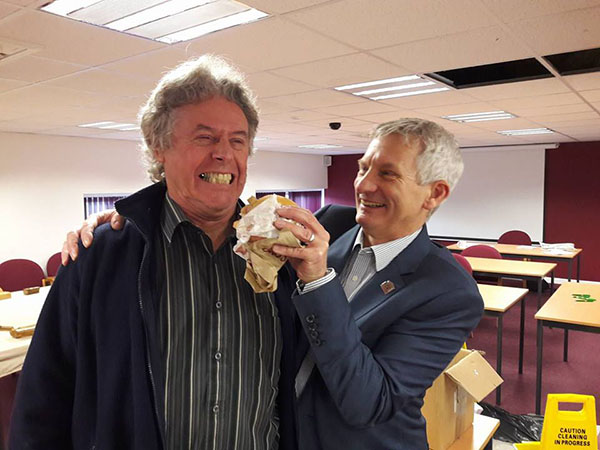CSTDB Timber module examination day in South Shields
I was in South Shields today as part of a Property Care Association team of examiners. The PCA group included Mike Bromley and David Hockey.
Our venue was South Tyneside Homes in South Shields, where there were ten staff sitting the timber infestations module of the Certificates Surveyor in timber and damp in buildings examination (CSTDB).
The CSTDB examination
CSTDB is a three-module examination, including this timber based session, as well as a dampness in building and health and safety module. The timber module is a daunting one, including extensive sections on timber physiology; surveying; entomology and mycology. Students have to know their hardwoods from softwood, woodworm for bark borer and wet rots from dry rot. In addition, they face a two-man grilling which is the famous oral (David and I this time).
That’s not all though – students are presented with a dozen timber samples, infested with a wide range of ‘nasties’ including different insects and fungi. These timbers need to be identified correctly.
The CSTDS – oral exam
Orals are designed to test candidate’s real-world knowledge, by presenting them with case studies and scenarios to see how they cope. This is my favourite bit because in our industry, practical and academic skill go hand in hand, so a written examination on its own, just wouldn’t do.
Chatting about infestations, sites and treatment options can open-up a person who may feel stifled in a written environment. Conversely, a gifted writer and academic who thrives in exams may stumble when faced with evolving arguments face-to-face.
This broad examination approach is part of the reason CSRT (the forerunner of CSTDB), has come to be recognised as the ‘must have’ qualification for timber and damp specialist surveyors. PCA go to great lengths to maintain rigorous standards. This ensures that those who work hard enough to obtain CSTDB, can be proud of their achievements and be sure their work is recognised across the industry.
Examiners don’t know everything! South Tyneside Homes manager Craig, offered me something called a ‘Saveloy Dip’. I was dubious, but being from Yorkshire I wasn’t going to say no to a free ‘sandwich’.
Craig presented me with what can only be described as a dead man’s hand in a sandwich – the sausages (The ‘Saveloys’ reminiscent of fingers – the dip, a Pease pudding with a pus-like colour and texture) …. I twas delicious!
I learned lots today:
- South Shields is the culinary capital of England
- Tyneside Homes is populated by dedicated, friendly and professional people who deserve to prosper and
- These guys know their rots!
Thank you to the team at PCA for organising the day and especially to all those in South Shields who worked so hard and took the exams with us today – well done. You all made David, Mike and I’s trip a real pleasure.
It’s not over yet, with damp modules to come. I’m sure that there will be success and disappointment by the end of the process. For those who pass – welcome to a growing club of specialists whose knowledge has been validated by examination. If the news is lees good – don’t despair, exams and modules can be re-taken, knowledge gaps filled and lessons learned. Don’t give up.
For the tastiest Saveloy dip – get the one I sampled from Dicksons.
Best wishes
Dry Rot.


Great work by you all. I’m delighted to see you in my neck of the woods.
Thank you Neil,
It was good fun. Some great candidates too and the Saveloy Dip was ace!